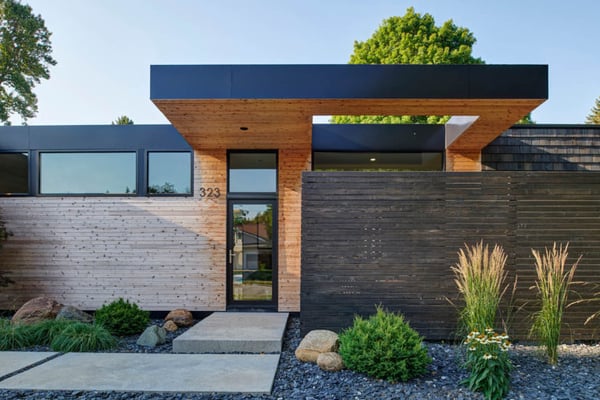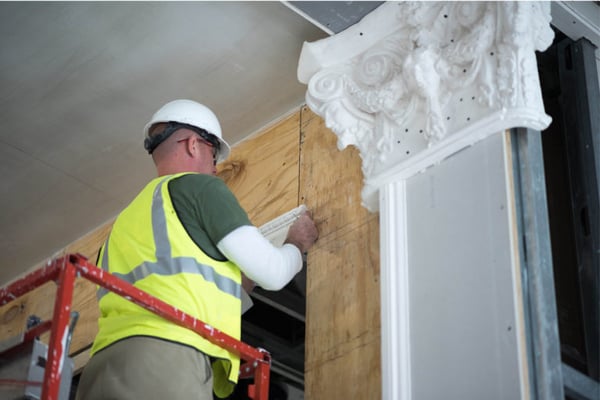Estimating architecture fees is not easy, and if you are starting your first building project, you might be struggling to get a straightforward quote. Even a simple Google search for “architecture fees” brings up inconsistent results. For many, the lack of clarity can be confusing and frustrating.
At Neumann Monson, we are working to add some clarity to architecture fees. Before consulting an architect, it’s helpful to know why fees differ from project to project.
Whether a fee is at the low or high end of the pricing spectrum depends on several factors, including:
- Size
- Complexity
- Level of Risk
- Engineer and Sub-Consultant Involvement
In this article, you’ll learn how these factors influence fees, helping you better estimate what you will pay for architectural services. Even if you can’t get an exact quote for your project, you’ll understand how your project’s unique requirements impact how much you will pay.
How do Percentage Fees Work?
Before diving into the factors that influence architecture fees, let’s first explore how percentage fees work.
A “percentage fee” refers to a percentage of the project’s construction cost.
For example, an architect may charge a 10% fee for a project that bids at $1M construction cost, meaning the building owner would pay $100,000 for basic services. At Neumann Monson, our basic services typically range from 7-15% of the construction cost.
Although architects may also charge a fixed or hourly rate, the percentage method has been an industry standard. Construction costs often reflect the size and complexity of a project. By charging a percentage of the construction cost, the architect can estimate the time and effort it takes to complete the tasks involved.
Generally, percentage fees are used for basic services while supplemental fees are charged in a variety of ways. To learn more, check out our guide to basic and supplemental services.
Factors that Influence Architectural Fees
1. Project Size
On smaller projects, architects will charge a higher percentage fee. Although this may seem counterintuitive, the reason relates to the time and effort it takes to complete the design work. Larger projects have many repeatable elements. For example, an architect may have to detail a single element that will repeat several times throughout the building.
On the other hand, if each element needs to be individually designed on a smaller project, there will be a similar amount of work between projects of different sizes. In short, there are more design decisions per square foot on smaller projects. To compensate for the work, an architect will need to charge a higher percentage of a small project’s budget.
Think of it this way: on a $1M commercial project, an architect may need to charge a 10% fee to cover the time and effort it took to complete the design. On a project that bids at $100M, an architect may only need to charge 7% to cover the same level of work.
Generally, as the size of a project goes down, the percentage fee goes up.

Smaller projects often have higher fees
2. Project Complexity
Similarly, architecture fees are tied to a project’s complexity. More complex projects require a higher level of planning and more involvement from architects and engineers. To compensate for their time, architects will charge a higher fee.
Sometimes, complexity is tied to project type. Projects like parking garages tend to be at the simple end of the spectrum, while hospitals tend to be the most complex. Often, K-12 schools, athletic facilities, and most commercial projects fall in the middle of the spectrum.
In other cases, complexity relates to the architect’s level of involvement. Government projects with a high degree of oversight may require a higher fee to cover additional processes, steps, and paperwork involved. Likewise, projects that have ambitious sustainability goals or utilize innovative construction techniques may require a higher fee to account for any extra planning, research, and certification processes.
3. Level of Risk
Complexity often correlates with risk. Every building is unique, and every project presents unknowns. Some projects, however, present more risk than others. For example, renovations can be especially unpredictable.
Once design or construction is already underway, the project team may have to address unforeseen problems with the existing structure. For example, if a previously unknown condition is found during construction, the architect will need to dedicate time to resolving these surprises. To cover any unknown work, the architect may have to charge a higher fee.

Renovations often present more risk
4. Engineer and Sub-Consultant Involvement
Basic services typically include structural, mechanical, and electrical engineering. An architect’s fee covers not only the design of the building, but the coordination and integration of building systems designed by these consultants. Often, these fees account for a large percentage of the architect’s fee. At Neumann Monson, engineering and sub-consultant fees can account for 35-65% of our basic services fee.
Depending on the project type, the degree of engineer involvement will vary. For example, parking structures require close collaboration with a structural engineer, though mechanical and electrical engineers are less involved. Similarly, a laboratory or a data processing center will require more involvement from mechanical and electrical engineers.
The unique requirements of each project will dictate the involvement of engineers and other sub-consultants, impacting the architect’s fee.
Estimating Architecture Fees for Your Project
Architecture is a service, which means clients pay for the time and effort that goes into a project. Often, construction costs reflect this time and effort, which is why percentage fees are the industry standard. Many factors are likely to impact construction cost, and thus, the cost of architecture fees. Looking at your project holistically provides the most accurate estimation.
Now that you have a better understanding of how architecture fees work, learn how to start planning your budget by checking out our guide to project and construction costs.
